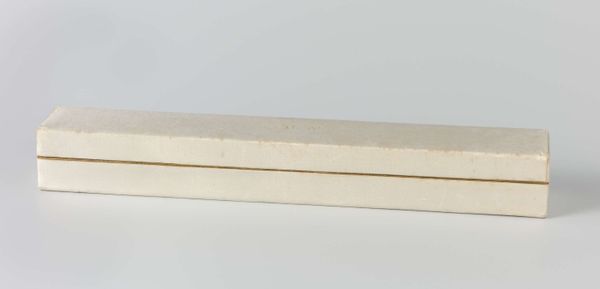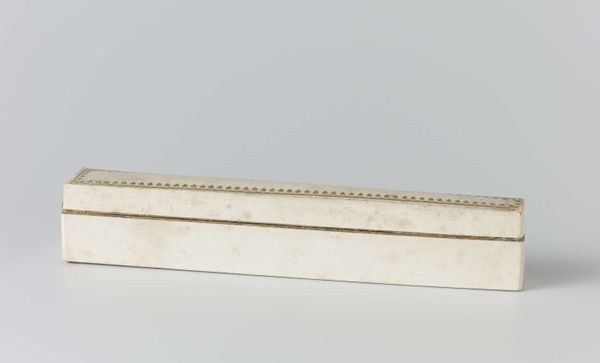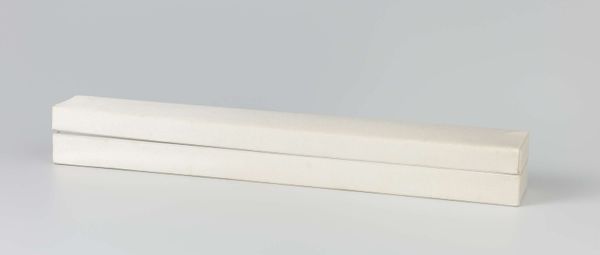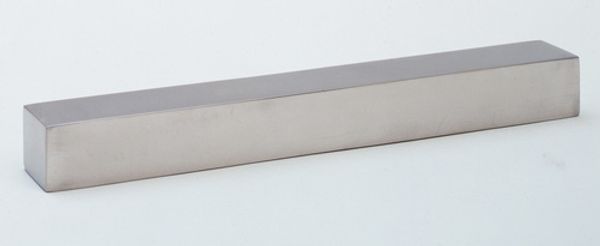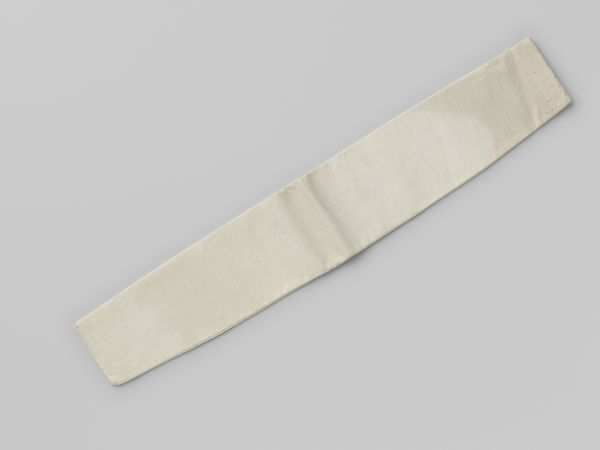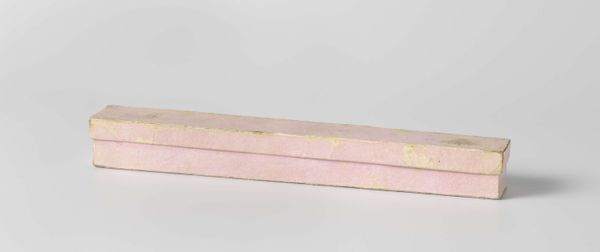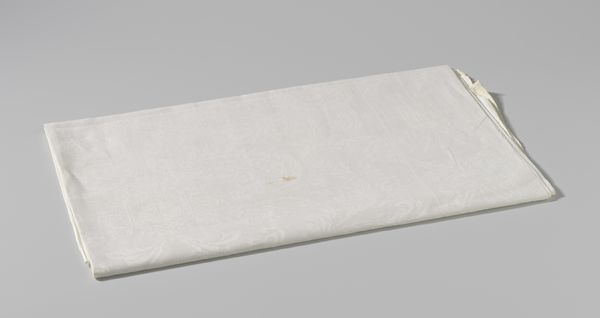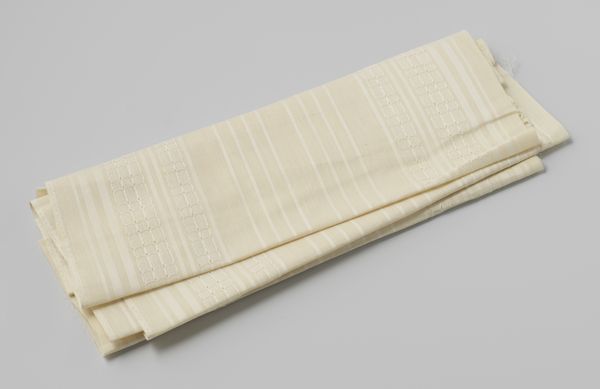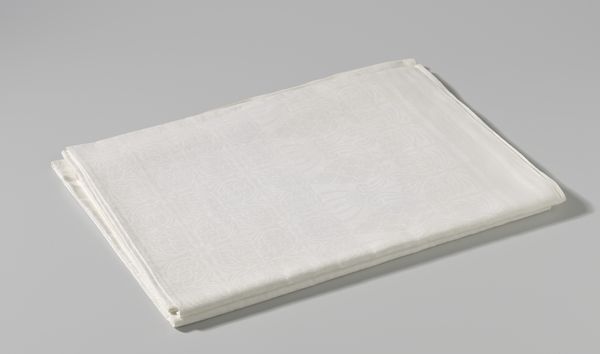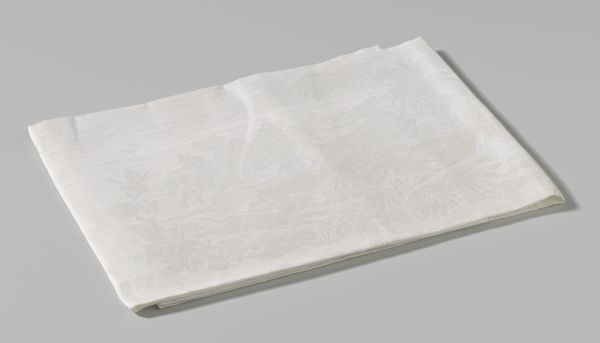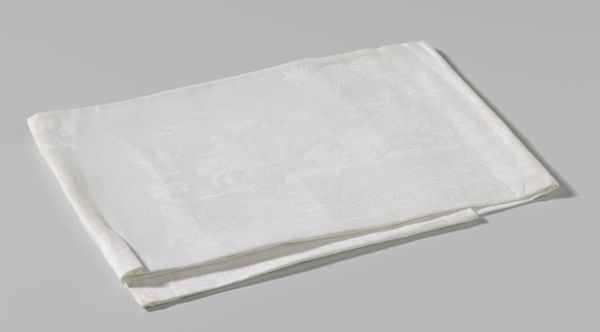
Waaierdoos, taps toelopend, van witte zijde aan de buitenkant, binnenkant beplakt met wit glanzend papier c. 1900 - 1920
0:00
0:00
photography
#
photography
#
geometric
#
decorative-art
Dimensions: length 23.5 cm, width 4 cm, height 6 cm
Copyright: Rijks Museum: Open Domain
Curator: Immediately, I think of purity and perhaps quiet luxury. It is surprisingly minimalist in its presentation. Editor: We are observing here a fan box, or ‘waaierdoos,’ tapering inwards, crafted around the turn of the century, probably between 1900 and 1920. Note the construction, exterior in white silk, the interior lined with a white glossy paper. Such choices speak volumes about prevailing values and materials of the era. Curator: That gleaming white resonates. White silk represents a constellation of virtues – innocence, refinement. I can almost feel the soft rustle of silk, connecting us to bygone sensibilities of gentle composure and courtship. Editor: The materials chosen tell another story too. The combination of silk and glossy paper – silk was undoubtedly a prized fabric associated with elegance and exclusivity. I would be curious about its sourcing at this point, since this indicates specific markets and production dynamics. Curator: Precisely. Silk itself bore powerful connotations in many cultures and historical periods, acting as an emblem of high rank or moral excellence. This box is clearly about preservation – securing beauty and value against time. Consider it holding the secrets, or perhaps whispers, of past social rituals. Editor: The creation of this box undoubtedly relied on skilled craftspeople, likely working within workshops that defined production at that time. A look into the hands involved - from silk weaving to paper production to box assembly reveals how different expertise was valued or undervalued and informs our understanding about wealth accumulation. Curator: Thinking further on the geometric and decorative-art categorization, perhaps we find a link in Neoplatonism in the proportional design or even Pythagorean numerology. This box does not scream; rather it invites a different relationship to truth. Editor: I'm really curious about who produced the box, the relationship of workers to their labour and what objects the box might have previously contained. Perhaps that offers clues about gender, wealth and global trades. Curator: An astute point. And thinking in semiotic terms, beyond just an container, what unspoken agreements made this specific design not merely functional but emotionally meaningful to its original owner? Editor: Thinking of it that way has certainly broadened my first reading from production, material analysis and commodity exchange. Curator: And my approach, too. By engaging material reality we can have better understanding of its cultural symbols, hopefully resulting in a comprehensive approach.
Comments
No comments
Be the first to comment and join the conversation on the ultimate creative platform.
